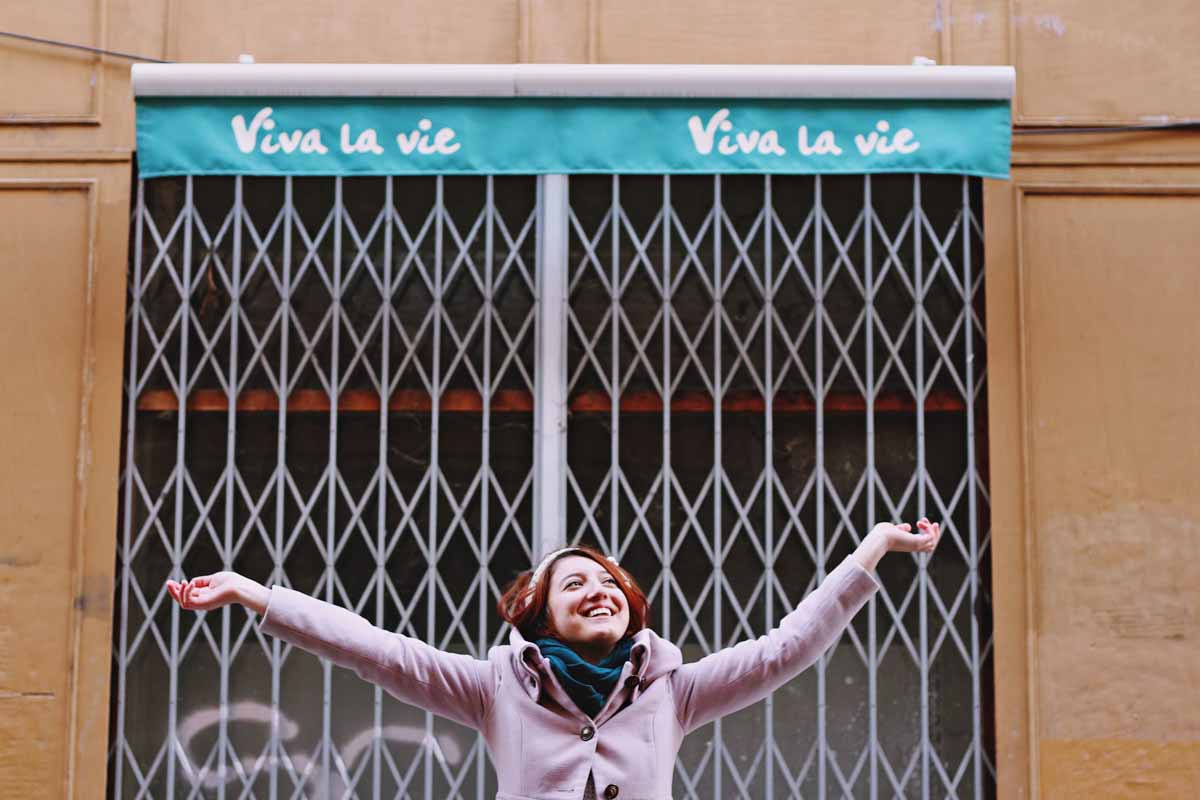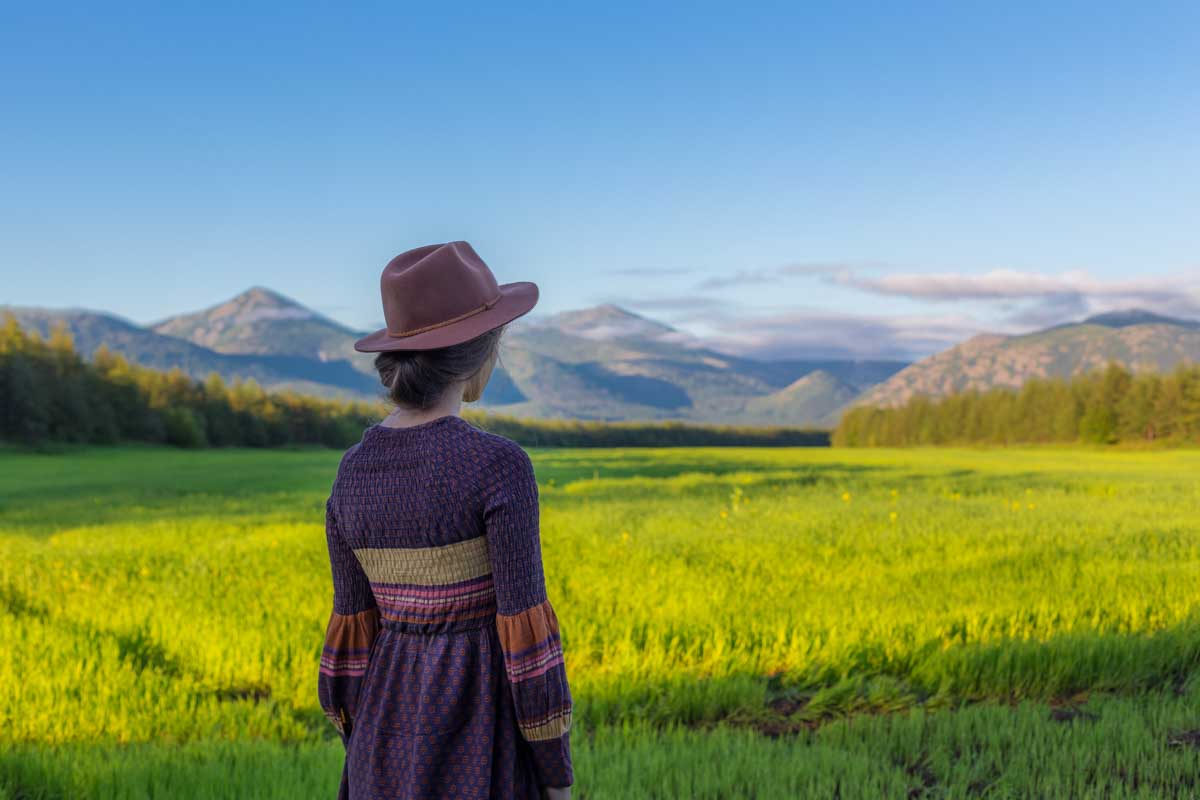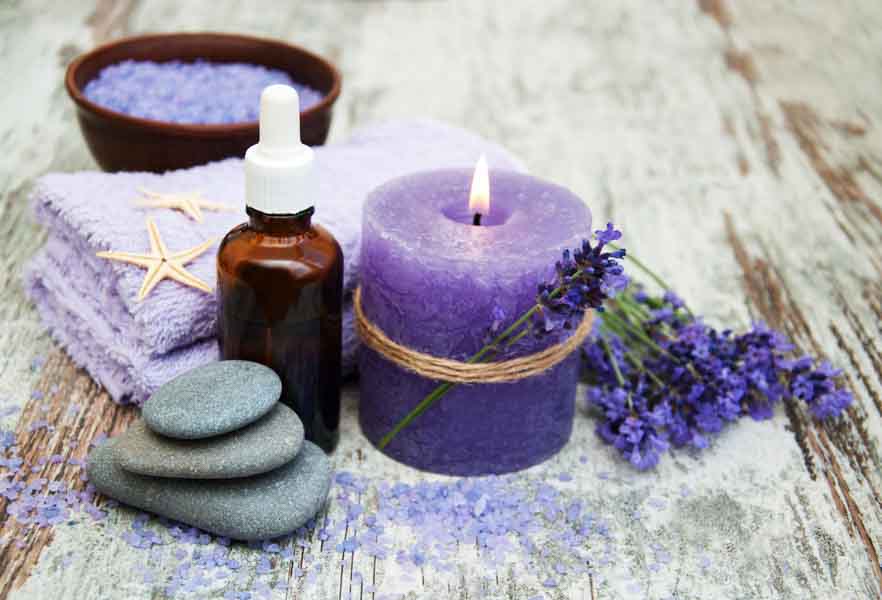Lavender: Not just for Cosmetics and Fragrances
Lavender is an incredibly popular and versatile essential oil.
It is mostly known for its lovely aromatic scent, which can be found in many fragrances and cosmetics. In addition it also has a wide breadth of healing potential and beneficial properties that address a variety of ailments common among essential oil users.
The Origins of Lavender
The word lavender comes from the Latin word “lavare” which means “to wash”. This word origin makes sense when you look at the common uses of lavender back in ancient times; to bath in, wash clothes in and as a perfume.
Originating from the mint family of herbs, lavender is said to have nearly forty different species within its own family, with the most common forms being Lavandula angustifolia or true lavender and Lavandual latifolia or spike lavender. Lavender was called “nardus” by the ancient Greeks after Naarda a Syrian city.
Lavender is said to have originated in the Mediterranean, Middle East and India and dates back as far as 2,500 years, eventually spreading throughout the known world.
Lavender was considered a holy herb and was commonly used in the preparation of Holy Essence and was often mentioned in the bible.
General Lavender Facts
Most of us know lavender by its scent, growing in gardens and fields around the world. It is commonly used in cosmetics and fragrances, but there is much more to lavender that you may not know. Here are a few interesting facts that you may not have known about lavender.
- It is a part of the same herb family as mint.
- It’s been used for at least 2500 years – likely far longer.
- Ancient Egyptians used it in their mummification process.
- Bathing was not as popular back in the 1600s so lavender was used as a perfume to mask the smell.
- Helps to deter certain pests from your yard such as mice, flies and mosquitos.
- The nectar is used to make high quality honey.
- Lavender means luck, success, devotion, happiness or distrust in the language of plants.
- Not all lavender varieties produce seeds. Grosso & Provence produce no seeds, while English lavenders like Hidcote, Lady, Munstead & Jean Davis produce seeds.
- The color of the lavender flowers are typically blue or purple in color, however, pink and yellow varieties do exist.
- It takes about 2-3 weeks to fully dry a bunch of lavender.
- Lavender is a great herb to cook and bake with.
Lavender Essential Oil Benefits and Your Health
Lavender offers numerous health benefits. It helps to ease anxiety and stress as well as helping with burns and bug bites. It can aid in digestion and help to boost ones immune system. It can even help with headaches and acne. The health benefits when it comes to lavender seem almost endless.
So how is lavender able to do all of this? Simply put lavender has a potent and soothing chemical make-up.
True lavender or Lavandula angustifolia contains two potent chemicals are linalool, linalyl acetate. While spike lavender or Lavandual latifolia is made up of another 3 main chemical; these chemicals are linalool, camphor and 1,8 cinedo.
Both types of lavender’s supportive chemical makeup are largely comprised and bolstered by the organic compound linalool. This chemical helps to reduce pain, inflammation and muscle spasms, has anti-infection properties, and is an immune stimulant and a sedative.
Lavender’s other notable therapeutic compounds include:
- Linalyl acetate helps to reduce pain, is an immune stimulate and a sedative.
- Camphor is a decongestant and helped to reduce coughing and pain associated with colds and flu.
- 1,8 cineole is a decongestant, helps to reduce pain and ease muscle spasms as well as helping with circulation especially when it comes to the head.
This all begins to make more sense once the chemical compounds that make up lavender are broken down. Spike lavender is commonly used as a decongestant, cold and flu fighter, suppressant of coughs, sinus aid, headache aid, muscles spasms reducer, pain reliever and helps with revitalization of the body. True lavender can be used as a sedative, calming agent, pain and tension reducer and to support immune function.
20 Lavender Essential Oil Uses for Your Health

Acne: Due to its anti-bacteria qualities lavender makes a great face-wash. It helps to clear the skin of impurities leaving the skin feeling healthy and clearing away acne.
Related: How to Treat Acne with Essential Oils & Hydrosols
Anti-bacterial: Lavenders anti-bacterial properties help to prevent infection and aid in fighting bacteria and fungus. These qualities are great when it comes to cleaning the house or wounds.
Antioxidant: Lavender has been known to help the body produce antioxidants to aid in the reduction and elimination of free radicals; which seem to be at the root of most diseases plaguing man today. Simply inhaling lavender daily can aid in the production of these antioxidants.
Brain function: By inhaling lavender daily it can help to awaken the body, reduce stress and diminish the effects of depression and anxiety thus helping to improve brain function. By awakening the body lavender helps to improve blood flow and circulation which helps to improve brain function as well.
Related: 5 Essential Oil Blends that Promote Focus & Concentration
Burn and wound care: The anti-bacterial properties associated with lavender help to clean wounds of bacteria and possible irritants that may reduce healing time and increase the possibility of infections. Because of this lavender can help to speed up healing time as well as help to reduce the pain and inflammation associated with burns and wounds.
Cleaning: Due to its natural anti-bacterial properties lavender makes a great cleaning agent for around the home; being non-toxic is also a bonus. Not to mention the pleasant smell helps to keep those within the home calm and relaxed. A win-win!
Depression and anxiety: Naturally calming lavender helps to relax the body thus decreasing the effects of depression and anxiety. By helping to lower stress and anxiety lavender also aids in sleep which can then also aid in the reduction of stress and anxiety. By easing the mind it also helps to reduce restlessness which helps to clear the mind making a person able to function more efficiently and calmly. It helps to sooth the body and mind which helps to relieve the anxious and depressive thoughts one may have. This helps to improve one’s mood with no adverse long-term effects; unlike those from pharmaceutical medications.
Related: 14 Essential oils for High Blood Pressure
Digestion aid: Lavender aids the digestive system through its anti-bacterial and anti-inflammatory properties. The polyphenols that are found in lavender help to decrease gas in your digestive system thus helping to prevent and eliminate bloating, cramping and general stomach discomfort associated with bloating. The anti-inflammatory properties of lavender help to sooth the stomach especially when feeling nauseous.
Hair Loss Aid: Lavender helps to improve the health and quality of your hair by boosting the health of the hair follicle beds and your hair itself. It can also help in the reduction of dry skin that is commonly associated with dandruff. Due to its anti-bacterial properties lavender may aid in the prevention of lice and nits.
Related: 8 Essential Oils for Hair Loss / Alopacia
Headaches: Due to its anti-inflammatory and pain reduction properties lavender is a natural headache soother. By helping to reduce the pain and inflammation in the brain and neck area lavender is able to sooth and calm a person with any type of headache or even migraines. Used widely with peppermint oil the two, when rubbed on the temples or inhaled, can ease the pain and inflammation related to headaches ultimately reducing and getting rid of them.
Related: 7 Essential Oils for Headaches / Migraines
Immunity booster: The anti-bacterial properties in lavender help to boost ones immunity by helping to fight infection. This is especially beneficial for those fighting a cold or flu, healing a wound or burn, or fighting cancer. Lavender helps to prevent the grown of bacteria while helping to clear the body of unwanted irritants. This is especially important for those with a cold or flu as it works as a decongestant while helping to reduce pain and coughing that are sometimes linked to being sick.
Inflammation reducer: With lavenders ability to relax the body and mind it helps to reduce inflammation and pain within the body. It can be applied directly to the inflamed area or can be inhaled to help soothe the area and body.
Insect bites: Lavenders antibacterial make it great for insect bites. It helps to soothe the bite are as well as helping to prevent infection and irritation to the area. Due to its strong scent it has been known to repel insects, such as mosquitos, as well.
Related: 10 Essential Oils for Itching / Pruritis
Joint and muscle pain: Lavender is amazing for joint and muscle pain. It not only helps to decrease inflammation to the area by increasing circulation it also helps to reduce the pain in the area by helping to relax the mind the and body. Simply by applying directly to the area and massaging it in will work wonders on that joint or muscle that is bothering you.
Related: 9 Essential Oils for Sore Muscles / Muscle Pain
PMS: With PMS comes bloating, cramping, pain and inflammation good thing lavender covers all of these areas. Not to mention it helps to relieve some of the emotional discomfort that sometimes comes with ones time of the month. Inhaling this essential oil when PMS symptoms occur will help to increase circulation which in turn will help to decrease cramping, pain, bloating, stress, anxiety and emotional discomfort.
Related: 7 Essential Oils for Hot Flashes & Night Sweats
Relaxation: Lavender has a very calming effect. This calming effect greatly helps to relax a person; helping to decompress and destress from life. It calms both the body and the mind allowing a person to relax and breathe. This calming effect is also very beneficial when it comes to sleep as it helps to relax and unclutter the mind which will increase the length and quality of sleep.
Respiratory aid: Lavenders anti-bacterial and anti-inflammation properties make it person for fighting colds or other respiratory ailments. It helps to clear out the body of unwanted foreign bodies helping the body to fight the bug present while also helping to boost the immune system. Diffusing the essential oil in a hot bath or diffuser will help to clear out the congestion.
Related: How to Safely & Effectively Inhale Essential Oils
Scar and stretch marks: For years the ancients used lavender to reduce the signs of aging; not to mention the lovely fragrance helped as they lathered it on their faces. Lavender helps to bring moisture and increases circulation to the problem area which helps to decrease the signs of a scar or stretch mark. Pairing it with aloe vera and applying to the area will help increase the healing process.
Related: 11 Essential Oils for Healing Scars, 7 Essential Oils for Cellulite
Sedative: Lavender has been found to increase not only sleep length but the quality of sleep you have by not only relaxing your mind but your body as well. It helps a person to fall asleep faster, stay asleep longer and reduces restfulness of the body and mind. Lavender is very beneficial for those struggling with insomnia. Combining lavender with roman chamomile and magnesium oils will help boost the length and quality of sleep that much more.
Related: 12 Essential Oils for Sleep + Crafting a Bedtime Routine
Skin Care: Lavender is great for the skin due to its antibacterial qualities. It helps to increase circulation in the skin as well as bringing moisture to the skin which both will help to reduce the signs of aging. It is great not only for cleaning and caring for the face, helping to get rid of acne and dryness, it is also great for the rest of the body when it comes to cleaning and healing wounds, helping with dry skin, especially those with eczema or psoriasis, and helping with stretch marks or age spots.
Diabetes: lavender has been shown to increase and maintain blood glucose levels, decreases weight gain and helps with kidney and liver functions. When it comes to cancer many of the plant chemicals that make up lavender have been known to aid in the treatment of cancer. Linalool has been known to inhibit the growth of certain cancer cells while killing other cancer cells. Perillyl alcohol has been known to aid those with cancer when other treatments have been ineffective giving patients a longer life expectancy. The anti-inflammation and pain reduction properties of lavender also make it highly sought after for those going through the pain of cancer treatments.
DIY at Home Lavender Recipes

Lavender has enough health benefits that it can be utilized in a wide variety of DIY applications for so many ailments. Here are a few recipes to try and experiment with on you own.
Lavender Homemade Soap Bar
Ingredients:
- 20-30 drops of lavender EO
- Goat’s milk soap base
- 3 drops of Vitamin E Oil
- A soap mold
Directions:
- Place the soap base in a bowl and heat up over a pot of water on the stove over a medium heat.
- Once melted remove from the heat and allow to cool for a moment.
- Add in the lavender oil and Vitamin E. Mix well and transfer to the soap molds.
- Allow the soap to cool completely then pop out of the molds and use.
- Be sure to keep them at room temperature for maximum quality and longevity.
Homemade Make-up Setting Spray
Ingredients:
- 1 Tbsp. aloe vera gel
- 1 Tbsp. witch hazel
- 5 drops lavender EO
- 2½ Tbsp. purified water
- Glass spray bottle
- Small funnel
Directions:
- In a small dish or jar combine the aloe vera and the witch hazel together. Mix well.
- Next add in the lavender essential oil. Mix well.
- Then add in the water. Mix well.
- Once all the ingredients are fully blended together transfer to the spray bottle, carefully, using the funnel.
- To use spray onto face holding the bottle a few inches away from the face. Allow to dry and away you go!
Be sure to shake the bottle prior to every use.
Homemade Rash Cream
Ingredients:
- ¼ cup cocoa butter
- ⅛ cup grapeseed oil
- 2 Tbsp. bentonite clay
- 2 Tbsp. aloe vera gel
- 10 drops lavender EO
- 1-2 Tbsp. witch hazel
Directions:
- In a double boiler on low heat melt together the cocoa butter and the grape seed oil. Stir to mix well.
- Next stir in the aloe vera gel and mix well.
- Remove from the heat and add in the bentonite clay, lavender and witch hazel. Mix well.
- Transfer to a jar and seal.
- Apply to affect area twice a day and allowing to dry and absorb into the affected area for 10-15 minutes.
- Gently rinse off with a wash cloth and warm water.
Homemade Headache Inhaler
Ingredients:
- 2 drops frankincense EO
- 7 drops lavender EO
- 3 drops Ravintsara EO
- 3 drops Fir EO
- Inhaler stick
Mix all of the essential oils together and transfer to the inhaler stick. Inhale as needed when headache or migraine is present. This mixture can also be put into a roller ball container which can be applied to the temples during a headache or migraine attack.
Don’t forget to try lavender when you are baking or cooking. Lavender can be a great addition to a dessert, salad or meat dish. Experiment and enjoy.
Possible Side Effects and Cautions When Using Lavender
For most people lavender is safe to use internally and externally, but for others there could be an allergic to this herb. It can also have adverse effects on certain medications as well caution should be used for those that are pregnant or trying to get pregnant.
- Caution should be used by those with a known allergic reaction to the mint herb family. Since lavender is also a part of the mint family a person may have an allergic reaction to this herb as well.
- Caution should be used by those taking prescription medications for sleep disorders or depression as lavender can increase the effectiveness of these medications. Since lavender is a natural sedative it will increase even over-the-counter sleep aids making one extremely drowsy, which is unsafe.
- Caution should be used by those pregnant or trying to get pregnant due to its sedation and relaxation qualities. Lavender may also affect hormone levels as well which could be dangerous to those who are pregnant or young children.
What to Look for When Purchasing Lavender Essential Oil

When it comes to purchasing lavender essential oil you want to be sure you are purchasing the best quality as well as true lavender oil. Here are some tips and information to consider when purchasing you lavender essential oil.
- Lavender is typically produced in France and Bulgaria.
- It is harvested in July and usually ready for shipment by October.
- It takes 2-3 months to properly distill a harvest.
- It takes a couple weeks for a bunch of lavender to fully dry in order to be ready for distilling.
- The chemical composition of each and every batch will differ slightly due to the changes in climate, temperature, humidity, precipitation and overall changes within the environment it is grown in.
- Be sure you are purchasing true lavender Lavandula angustofolia and not lavandin. This is a cheaper substitute to true lavender; though it may yield more for the maker it is less effective for the user.
How to Make your own Lavender Essential Oil
When it comes to making your own lavender essential oil at home you can go about it a couple different ways. You can make a tincture or extract based product by immersing the lavender in oil and pulling out the fragrance and oils from the lavender buds or you can distill it to make a lavender essential oil. Either method comes with its own challenges and costs but can in the end be cost effective and true or pure in nature.
If you wish to make a true essential oil you will need to steam distill the lavender. In this process the lavender buds are distilled and then steamed. The steam is then cooled or condensed and the liquid is captured. This can be a long process yielding little but is the purest form of the essential oil and the correct way to capture it for use.
Making a tincture or extract from lavender is a bit easier to do; however, the end product is not as strong as a pure essential oil. That being said it is still effective.
In this process you crush or bruise the lavender then immerse it in a jar of either grain alcohol or cheap vodka sealing the jar. You then allow the jar with the lavender and alcohol to “steep” over several days shaking the jar daily to help the process along. The longer it steeps the stronger the oil. Once steeping is complete you must strain the liquid. This can be done using a coffee filter or cloth. Strain the liquid into another jar. Cover the new jar with a coffee filter or cloth and let it sit undisturbed for at least a week. This will help some of the alcohol to evaporate resulting in a more pure essential oil.
Conclusion

Hopefully you found the info in this post helpful. If you have any questions, comments or recommendations of your own please let us know in the comment section below.











